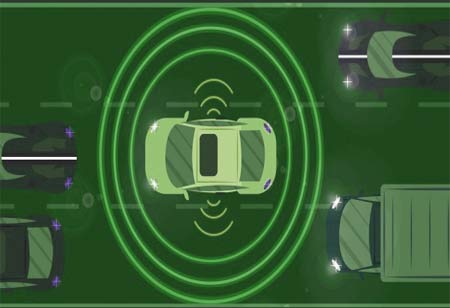THANK YOU FOR SUBSCRIBING
THANK YOU FOR SUBSCRIBING
Be first to read the latest tech news, Industry Leader's Insights, and CIO interviews of medium and large enterprises exclusively from Auto Tech Outlook

By
Auto Tech Outlook | Monday, August 12, 2024
Stay ahead of the industry with exclusive feature stories on the top companies, expert insights and the latest news delivered straight to your inbox. Subscribe today.
To accelerate EV adoption, governments, businesses, and individuals must work together to create supportive policies, invest in charging infrastructure, and raise awareness about the benefits of electric vehicles.
FREMONT, CA: Urban areas, which serve as centers of economic activity and population density, encounter considerable challenges related to congestion, air pollution, and public health. Electric vehicles (EVs) are increasingly recognized as a promising solution to address these challenges and transform urban mobility.
The Urban Challenge
Traditional internal combustion engine (ICE) vehicles have long been integral to urban transportation. However, their dependence on fossil fuels has led to several significant issues. The rising number of vehicles contributes to congestion, resulting in traffic jams that waste time and fuel and increase stress. Additionally, vehicle emissions exacerbate air pollution, leading to smog and respiratory diseases and contributing to climate change. Noise pollution from constant traffic disrupts urban peace, affecting residents' quality of life. Moreover, the adverse health impacts of vehicle emissions include a higher incidence of asthma, heart disease, and cancer.
The EV Solution
Electric vehicles (EVs) present a promising alternative to ICE vehicles. By replacing gasoline or diesel engines with electric motors, EVs eliminate tailpipe emissions, fostering cleaner air and a quieter urban environment. EVs generate zero tailpipe emissions, significantly enhancing air quality by removing harmful gases such as carbon monoxide, nitrogen oxides, and particulate matter. Reducing greenhouse gas emissions also plays a critical role in mitigating climate change. Consequently, the cleaner air associated with EVs contributes to improved respiratory health, a lower risk of heart disease, and an overall better quality of life for urban residents.
Improving Traffic Flow
EVs offer several benefits for urban traffic management. Their electric motors provide instant torque, facilitating quicker acceleration and smoother traffic flow. Additionally, EVs can integrate with smart grid systems and participate in demand response programs, which help balance the electricity grid and reduce peak load congestion. Furthermore, integrating EVs into car-sharing and ride-sharing services optimizes vehicle utilization and reduces the number of cars on the road.
Enhancing Urban Living
Compared to ICE vehicles, EVs' quiet operation contributes to a more serene urban environment. This noise reduction, combined with cleaner air and decreased congestion, improves city residents' quality of life. Additionally, the growth of the EV industry generates economic opportunities through job creation in manufacturing, charging infrastructure, and related services.
The interplay between public transportation and EVs, as well as the transformative effects of autonomous vehicles on urban mobility and EV adoption, are crucial. Equally crucial is the emphasis on proper battery recycling and disposal, which is essential for mitigating environmental impacts and ensuring the sustainability of the EV ecosystem.
The transition to electric vehicles is gaining momentum, with numerous cities and countries establishing ambitious targets for EV adoption. As technology advances and costs decrease, electric vehicles are on track to become the predominant mode of urban transportation. Embracing this shift will create cleaner, quieter, and more sustainable cities for future generations.
 Copyright © 2025 AutoTech Outlook. All Rights Reserved | Privacy Policy | Subscribe | Sitemap | About us | Feedback Policy | Editorial Policy
Copyright © 2025 AutoTech Outlook. All Rights Reserved | Privacy Policy | Subscribe | Sitemap | About us | Feedback Policy | Editorial Policy 



